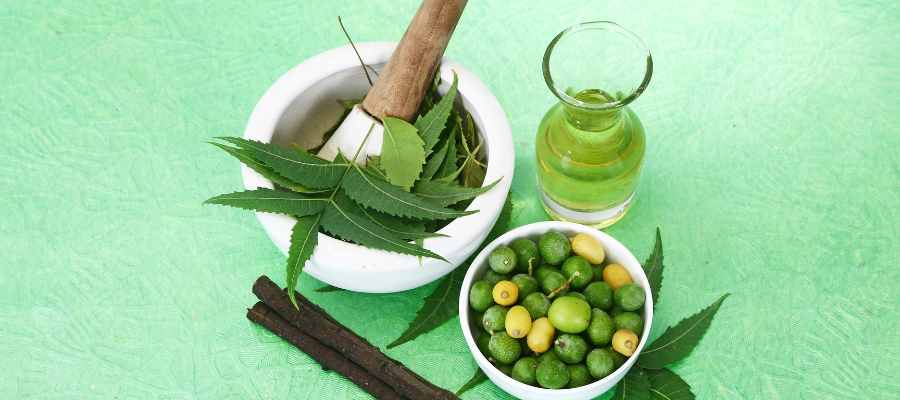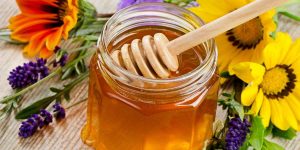Neem: The Green Treasure of Wellness

The neem tree, scientifically known as Azadirachta indica, is an ancient and versatile gift of nature that has served humanity for millennia. Originating in the Indian subcontinent, this remarkable tree has a rich history dating back thousands of years and boasts a plethora of uses. In this comprehensive article, we will delve into the origin, bio-scientific information, seed collection, and cultivation methods, and explore the multifaceted uses of neem, spanning with health remedies.
Origin and History
The neem tree’s roots penetrate deep into the annals of Indian history, where it has been revered and utilized for over two millennia. Known as “Nimba” in ancient Sanskrit texts, neem was a cornerstone of Ayurvedic medicine, one of the world’s oldest holistic healing systems. Its significance in Indian culture goes beyond medicine, often appearing in mythology, where it symbolizes purity and divinity.
Bio-scientific Information
Neem (Azadirachta indica) is a remarkable plant famous for its rich biochemical profile, which contains a wide array of natural compounds with diverse properties. One of the bioactive components found in neem is azadirachtin, a powerful natural insecticide and insect repellent, making neem extract invaluable in organic farming and pest control. Neem also contains nimbin and nimbidin, which possess anti-inflammatory and analgesic properties, making them useful in traditional medicine to treat various ailments. Additionally, neem leaves are rich in antioxidants such as quercetin and beta-carotene, which help strengthen the immune system and fight oxidative stress. Neem oil extracted from its seeds is rich in fatty acids, especially oleic and linoleic acids, and is valued for its moisturizing and antibacterial properties, making it a common ingredient in cosmetics and skin care products. Overall, the biochemical properties of neem imply its importance in the agricultural, pharmaceutical and cosmetic industries, offering a sustainable and natural alternative to many synthetic compounds.
Seed Collection and Planting
Neem trees are primarily propagated through seeds, which are typically enclosed within the neem fruits. To prepare the seeds for planting, they must be harvested from ripe fruits and thoroughly dried. Neem trees are robust and adaptable, capable of thriving in a variety of soil types, making them suitable for diverse climatic conditions.
Cultivation
Neem (Azadirachta indica) is typically cultivated during the monsoon season, which varies by region but generally falls between June and August. The process of neem cultivation begins with either planting neem seeds directly in well-drained soil or transplanting neem seedlings. Neem trees are hardy and can thrive in a wide range of soil types, from sandy to loamy, but they require good drainage to prevent waterlogged roots. These trees are known for their drought resistance once established and don’t demand excessive watering. Neem cultivation often involves regular pruning to promote healthy growth and maximize yield. The sustainable and eco-friendly nature of neem cultivation has made it a vital component of agriculture and traditional medicine in many parts of the world.

Multiple Uses of Neem :
Blood Purification and Skin Problems
Neem leaves and neem oil are renowned for their blood-purifying properties and their ability to promote healthy skin. They are commonly used to treat skin conditions such as acne, eczema, and psoriasis.
Neem in Dyspnea and Weakness
Neem’s rejuvenating properties make it a popular remedy for dyspnea (breathlessness) and weakness. Neem supplements are believed to boost energy levels and improve respiratory function.
To Prevent Displeasure in the Mouth
Neem’s natural antibacterial, antifungal, and antiviral properties make it an effective remedy for maintaining oral hygiene and preventing various oral health issues. Neem twigs have been used for centuries as a natural toothbrush.Using it to brush your teeth can help remove food particles, plaque, and bacteria from your teeth and gums. This not only prevents bad breath but also reduces the risk of cavities and gum disease.Neem based toothpaste and mouthwash can help prevent bad breath and maintain overall oral health.Neem powder can be mixed with water to create a paste that can be used for brushing your teeth. It not only helps clean your teeth effectively but also leaves a refreshing sensation in your mouth.
Use of Neem in Fever
Neem leaves can be brewed into tea, which is often used as a remedy for fever. The leaves’ natural cooling properties help lower body temperature and alleviate fever symptoms.Its antioxidants and bioactive compounds can strengthen the immune system. When your body is fighting off an infection that causes fever, a strong immune system can help you recover more quickly.
Use of Neem in Jaundice
Neem is believed to have hepatoprotective (liver-protecting) properties. The active compounds in neem leaves, such as nimbin and azadirachtin, may help safeguard the liver from further damage and support its natural healing processes.The liver plays a crucial role in detoxifying the body. Neem is thought to enhance the detoxification capacity of the liver, aiding in the removal of toxins and waste products that accumulate in the body during jaundice.A strong immune system is essential for recovery from any illness. Neem’s immune-boosting properties may help the body better combat the underlying causes of jaundice, such as viral infections or liver disorders.
Neem in Diabetes
Due to its ability to help control blood sugar levels, neem has become more popular in the management of diabetes. In addition to traditional diabetic therapy, neem offers a natural option. Its bioactive components are thought to have anti-diabetic characteristics that could enhance insulin sensitivity and lower blood sugar levels. People with diabetes frequently incorporate neem extracts and supplements into their diet. Neem may interact with other medications or treatments, so it’s important for people with diabetes to speak with their doctors before using it in their regimen. Neem can be an important supplement to managing diabetes, but it shouldn’t take the place of recommended medications, lifestyle changes, or dietary advice.
Benefits for Heart Disease
Neem’s capacity to indirectly boost heart health through its impact on numerous risk factors is at the heart of its use in the context of heart disease. The capacity of neem to reduce cholesterol levels, especially LDL or “bad” cholesterol, which is known to increase the risk of heart disease, is well established. Its anti-inflammatory characteristics may also aid in reducing blood vessel inflammation and preventing the onset of atherosclerosis, a condition marked by the accumulation of plaque in the arteries. It can be viewed as a component of a comprehensive strategy for maintaining heart health, which also includes eating a heart-healthy diet, getting regular exercise, and consulting a doctor for the best medical treatment for heart-related diseases.
As a Hair Protectant and Drier
Neem is a versatile natural remedy that extends its benefits to hair care as well. Neem oil, extracted from the seeds of the neem tree, is a popular choice for those seeking a hair protectant and drier. Its antimicrobial properties help combat dandruff and scalp infections, while its moisturizing qualities nourish hair follicles, promoting healthier and shinier locks. Additionally, neem oil can serve as a protective barrier against the damaging effects of environmental pollutants and UV rays. By applying neem oil to the hair and scalp, individuals can not only maintain a refreshed and dandruff-free scalp but also safeguard their hair from external elements, ensuring it remains strong and resilient.
During Indigestion
During episodes of indigestion, neem can be used as a natural remedy to alleviate discomfort and promote better digestion. Neem leaves or neem leaf extract can be brewed into a soothing tea. Consumed after meals, neem tea may help stimulate the digestive system, ease bloating, and reduce inflammation in the gastrointestinal tract. Its anti-inflammatory and antimicrobial properties can also assist in calming irritated stomach linings.
Sustainability and Environmental Impact
Beyond its manifold uses, neem is a sustainability champion. Its natural insect-repelling properties reduce the need for chemical pesticides, benefiting both agriculture and the environment. Neem oil is also biodegradable, further minimizing environmental impact. As a source of alternative medicine and agriculture practices, neem contributes to a holistic and eco-friendly approach to health and food production.
The neem tree, with its rich history and multifaceted applications, stands as a testament to the incredible potential of nature. From its roots in Ayurveda to its modern-day roles in agriculture and beyond, neem continues to demonstrate its value as a precious natural resource. As our understanding of neem deepens, we continue to unlock its vast potential benefits, solidifying its status as a remarkable gift from the natural world. Whether used for health and wellness or agricultural sustainability, neem remains a symbol of India’s deep-rooted connection with the environment and its commitment to holistic well-being.





